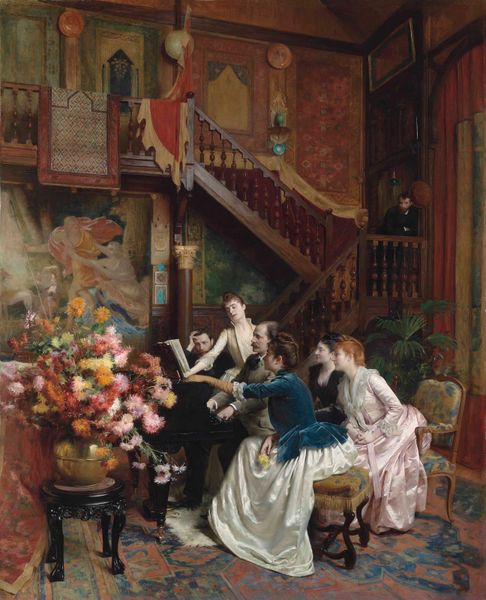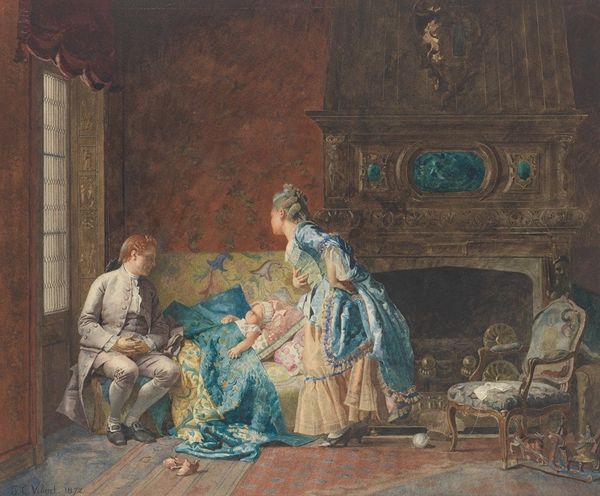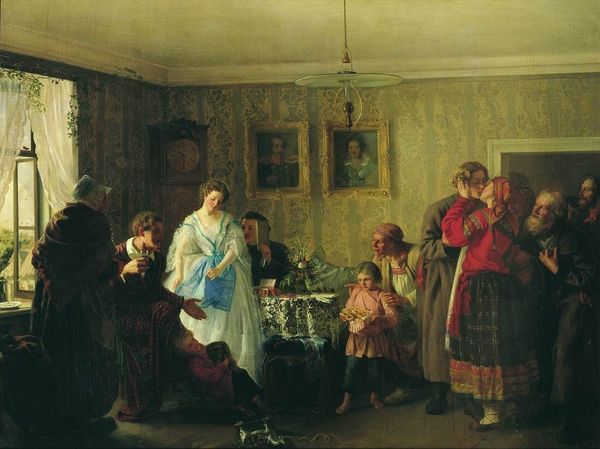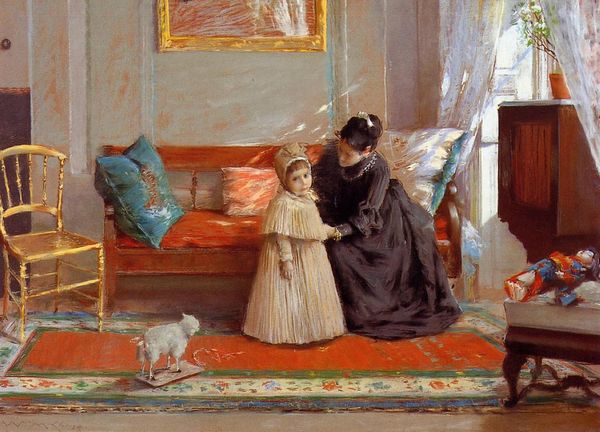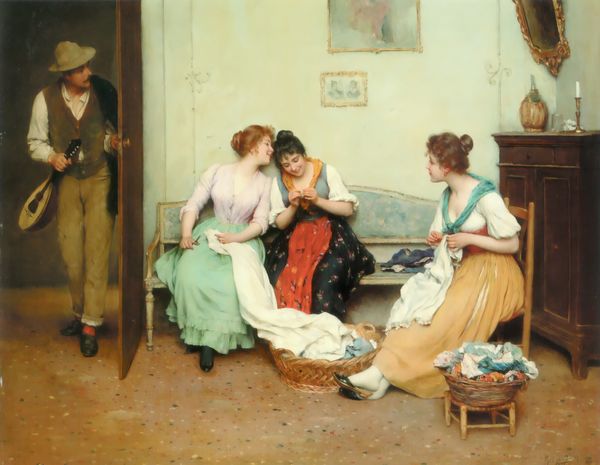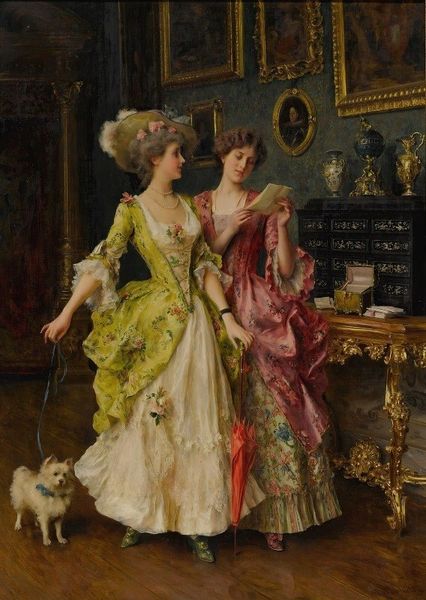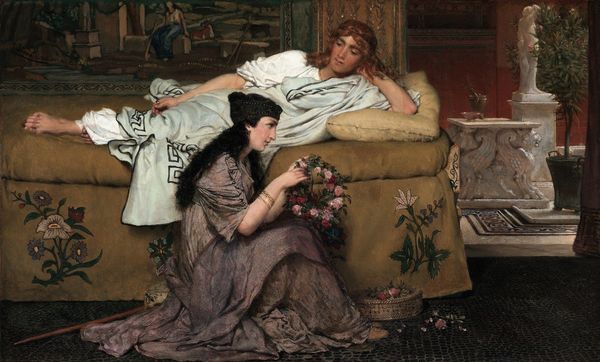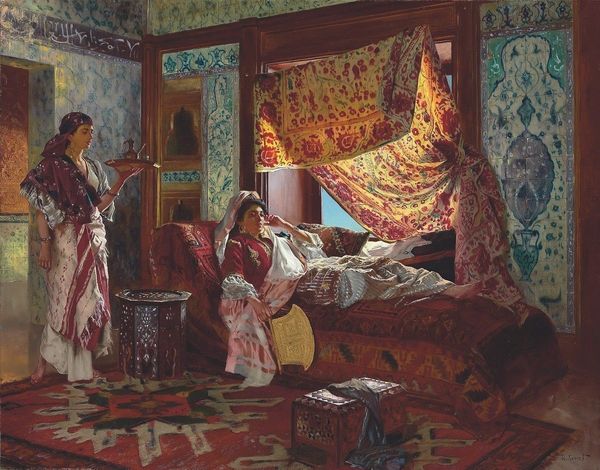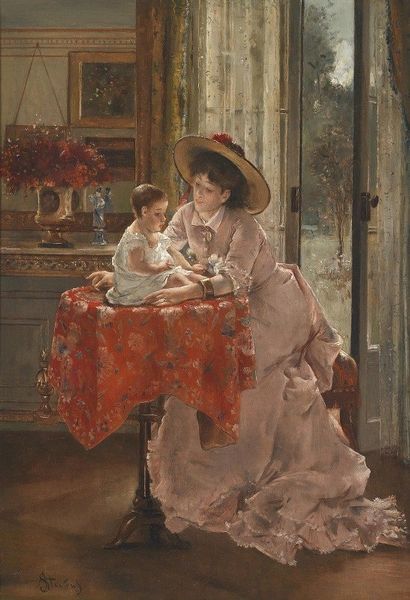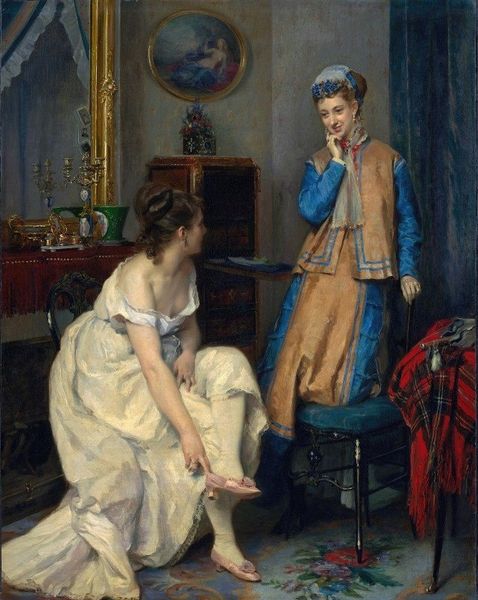
painting, oil-paint
#
portrait
#
gouache
#
figurative
#
painting
#
impressionism
#
oil-paint
#
figuration
#
oil painting
#
genre-painting
#
watercolor
Copyright: Public Domain: Artvee
Curator: Let’s turn our attention to “Les Visiteuses,” or “The Visitors,” an oil on canvas painted by Alfred Stevens in 1881. What strikes you upon viewing this scene? Editor: Well, initially, the chromatic restraint, especially the muted pastels—the pervasive pinks, blues, and whites—creates a sense of decorous tranquility, almost an artificial stasis. Note how this constrained palette focuses our gaze inward. Curator: The tableau of well-dressed women surrounding a child presents us with archetypes of feminine roles and societal expectations of the period. Observe the visual cues indicating refinement, like the delicate porcelain and oriental objects strategically placed in the background. Editor: The orientalism in the backdrop contributes significantly to the painting's surface dynamics, wouldn't you say? It suggests a complex dialogue between the representation of luxury and the social theater enacted within these domestic confines. Also, the positioning of figures—each distinct yet collectively framing the child at the table—offers intriguing formal relationships, directing our sightline, subtly constructing a hierarchy. Curator: Exactly! And the maternal gaze of the women creates a sphere of influence radiating out through gesture and expression, reaffirming themes of inheritance and familial legacy so critical to nineteenth-century bourgeois life. That strange suspended loop…is it an aesthetic choice, or something more symbolic? Is there a connotation to childhood innocence or familial obligation? Editor: That circular form, suspended above—almost an abstract element against the detailed milieu, adds a level of pictorial depth but defies immediate signification. The semiotics are layered here, a negotiation between surface appeal and embedded codes. Consider also Stevens' painterly handling: loose brushwork in areas allows detail to blur into abstraction—foreground and background continually in dialogue. Curator: Ultimately, it's this layering of signs, whether decorative or symbolic, that invites us to reflect on the roles people perform and the values society projects onto them. The image itself is almost an allegory of spectatorship! Editor: Indeed, beyond the compositional elements, it's the painting’s overall affect—its carefully mediated emotional resonance—that proves most compelling, lingering with a sense of something both intimate and subtly observed.
Comments
No comments
Be the first to comment and join the conversation on the ultimate creative platform.
